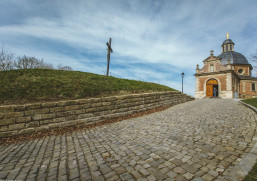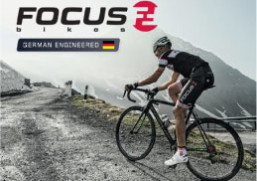21st Century Vintage: Riding l’Eroica
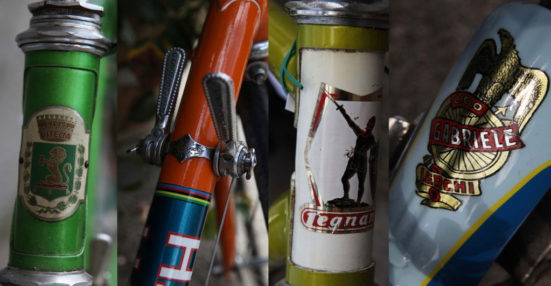
Ciclosport Porciatti is not an easy bike shop to find. Deep in the industrial section that surrounds the Tuscan city of Poggibonsi, Fabio Porciatti’s shop sits in a newly built row of warehouses, primarily used for the storing and distribution of wine, Pecorino cheese, clay pots and building materials. Negotiating the series of roundabouts that connects the Siena-Firenze motorway on the perimeter of one of Tuscany’s most overlooked cities, the oversized letters decorate the top of the final warehouse building that lines the lower section of the main road that leads up to San Gimignano. The shop itself is a neatly packed two story space housing all the modern cycling technology that leaps from the glossy pages of magazines and from the colorful and animated websites of the component companies and bike manufacturers we all know so well. I was at Fabio’s shop to collect a bike that I had arranged to rent for the vintage cycling event on the famed white roads of Tuscany, l’Eroica. Amidst a pile of discarded frames alongside the chain link fence that encloses the entry court and a rack of grey city bikes for rent, I saw the bike, its fire engine red frame chipped and slightly scared, sitting limp on two crusted, flat tubulars, the worn and unraveling handlebar wrap a wild splash of purple, black and yellow. I was staring at my vintage time machine, a piece of equipment I hoped would transport me back to a world that has slowly been dissolving in the lightning fast electronic age that props up modern life. I was about to embark on a soul-searching journey for authenticity, an experience that would hopefully culminate with becoming what the Italians call a congnoscenti-an expert–on l’Eroica. Accomplishing this would require far more than I was prepared for, but would deliver more reward than I could have ever imagined.
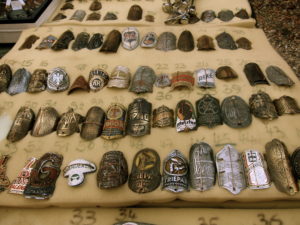 The 21st century has brought with it a wild array of rapid technological developments that has transformed modern life and enacted instant communication. What was once a time of daily morning news updates has become an era of up to the minute news flashes. This hyper-broadcasting has brought with it an onslaught of self proclaimed experts in every field ranging from sports to investing, food, wine, travel and even psycho analysis. While it is very easy, and of course any one’s freedom of speech, to blog about any experience, the tipping point that lends credence to an otherwise bloated commentary is what continues to confound, amuse and irritate me. While I don’t categorize myself an expert at much, I do believe the experiences I have encountered over the past ten years provide me with the appropriate level of knowledge to offer detailed, objective and constructive commentary on a variety of subjects, including cycling. I do feel strongly that this commentary needs to come with a pedigree of experience, accumulated through repetition in order to understand and fully appreciate the range of experiences and provide the basis to offer an objective and unbiased viewpoint. From this information, there is the ability to determine what is authentic, and what is falsely labeled as such. In the modern editorial world, even the most experienced of journalists can cave to the temptation to slap a label on something and call it authentic. My goal was to uncover the authentic and experience for myself the genuine cycling essence of an event that is threatening to become a fad, something that happens far too regularly in cycling.
The 21st century has brought with it a wild array of rapid technological developments that has transformed modern life and enacted instant communication. What was once a time of daily morning news updates has become an era of up to the minute news flashes. This hyper-broadcasting has brought with it an onslaught of self proclaimed experts in every field ranging from sports to investing, food, wine, travel and even psycho analysis. While it is very easy, and of course any one’s freedom of speech, to blog about any experience, the tipping point that lends credence to an otherwise bloated commentary is what continues to confound, amuse and irritate me. While I don’t categorize myself an expert at much, I do believe the experiences I have encountered over the past ten years provide me with the appropriate level of knowledge to offer detailed, objective and constructive commentary on a variety of subjects, including cycling. I do feel strongly that this commentary needs to come with a pedigree of experience, accumulated through repetition in order to understand and fully appreciate the range of experiences and provide the basis to offer an objective and unbiased viewpoint. From this information, there is the ability to determine what is authentic, and what is falsely labeled as such. In the modern editorial world, even the most experienced of journalists can cave to the temptation to slap a label on something and call it authentic. My goal was to uncover the authentic and experience for myself the genuine cycling essence of an event that is threatening to become a fad, something that happens far too regularly in cycling.
A year ago, I wrote about a memorable experience I had witnessing l’Eroica and visiting the Gino Bartali museum near Florence. I was enthralled by the atmosphere and the air of authenticity that rose from the tiny cobbled streets of Gaiole in Chianti. I’ve ridden the strade bianche on numerous occasions, and participated in l’Eroica in 2008, the final year modern bikes were allowed. But the lasting impression I came away with was that I had cheated. I felt the experience was only partially complete, and to fully understand the meaning of the event-and thus fully comprehend the enduring impact cycling has on Tuscans- I would have to return to ride the event on a vintage bike. I located, through a massive maze of contacts, emails and phone calls, a 1978 Moser built by Bianchi for the Sanson team of Francesco Moser to honor his victory at the 1977 World Championships at San Cristobal in Venezuela. The bike was dressed with Campagnolo Super Record and a beautifully stamped Ernesto Colnago crank set- certainly not original to the bike, but as gorgeous a piece of componentry as I have ever been fortunate enough to use. The 52 x 42 setup was matched, almost incomprehensibly, with a 12-21 six-speed cassette. Combined with a 42 tooth inner chain ring, I would have a low of 54 gear inches, the equivalent in modern gearing to riding a 39 x 18 or a 34 x 17. I have become accustomed to a low of 36.75. My search for authenticity would need to conquer this challenge.
Francesco Moser would go on to win 37 races as the World Champion in 1978, a statistic wildly incomprehensible when thinking about modern world champions, their limited and very specific race schedules, and the curse that seems to follow them. Among these were the first of his three consecutive Paris-Roubaix victories, four Giro d’Italia stage wins plus the points classification and the Giro di Lombardia. The Moser labeled Bianchi is also the same model ridden by Felice Gimondi, Moser’s predecessor, when he won the Giro d’Italia in 1967 for the Salvarani Team. In 1974, riding for the Bianchi-Campagnolo team, Gimondi won 13 races as the World Champion. Gimondi was the heir to the throne of Italian champion inherited from Gino Bartali and Fausto Coppi, a responsibility that enlisted him to compete against the Belgians Merckx and De Vlaeminck (a future teammate of Moser for one year on Sanson in 1978) among others. As I meticulously verified the provenance of the bike, the pieces of my puzzle began falling neatly into place, my path of authenticity becoming clearer. I had already decided to wear my vintage Salvarani wool jersey and cap that I purchased in honor of the obscure Dino Zandegu, who was the second Italian to win the Tour of Flanders (Fiorenzo Magni won in 1949, 50, 51) in 1967 while riding with Gimondi at Salvarani. Elaborately connected I realized, but in a world of six degrees of separation, I felt I had established an authentic link and had created a purpose in my head to put myself full throttle into the ride along a timeline that needed such verification to justify my participation- or at least that is what I told myself, and I was hard pressed not to believe it.
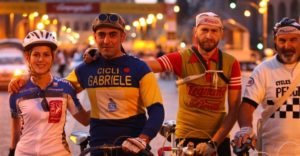 In our modern world, I have grown to recognize that anticipation often times outweighs reality. Walking the streets of Gaiole the day before my ride, I immediately knew from the atmosphere that this would not be the case with l’Eroica. For anyone who is a purveyor of the minutia of cycling, the variety of booths filling the entry to the registration hall was like walking a path to Eden. It seemed as though the history of cycling, at least a condensed portion of it from the mid 50’s to the mid 80’s, was spilling from clothing racks and laid out across tables with a collection of cycling memorabilia, parts, frames and bikes that ranged from the sublime to the absurd. Who, I thought, would hold onto such stuff for so many years, and who would possibly need something from one of these tables? As I strolled around the stands, I asked myself if I could spend all day here. The answer to that question defines the very nature of authenticity. My answer was a resounding yes. As I concluded this, my eyes caught the bright blue that defines the GIOS Torino frame of the Brooklyn Chewing Gum team of the mid 70’s. The contrasting glisten next to a perfectly polished chromed fork and chainstay took me a moment to adjust to. In the world of art, there are replicas of masterpieces that, while they may convey the image, fail to capture the inherent beauty that lies in original art. Taiwan offers no substitute to an original Italian frame, and as I stared open mouthed at this original hand built frameset, in my mind I found myself standing next to Mr. Paris-Roubaix himself, Roger De Vlaeminck, hunched over in his attic on a chilly winter morning in Eeklo, Belgium, gently rubbing the tread on a Clement tubular as it hung from the rafters, gauging their feel to see which would dress a pair of hand laced, 32 spoke, three-cross Ambrosio wheels, completing his bike in time for another assault on spring. Who would argue with a man who won his namesake race four times, finished on the podium an additional five times and didn’t have his first flat on the pavé until his eleventh year? On this day, it was clear to see the history of cycling as it oozed from every square meter in Gaiole, proudly pushing against the advances of modern technology and manufacturing to remind those of us in the sport of its proud heritage.
In our modern world, I have grown to recognize that anticipation often times outweighs reality. Walking the streets of Gaiole the day before my ride, I immediately knew from the atmosphere that this would not be the case with l’Eroica. For anyone who is a purveyor of the minutia of cycling, the variety of booths filling the entry to the registration hall was like walking a path to Eden. It seemed as though the history of cycling, at least a condensed portion of it from the mid 50’s to the mid 80’s, was spilling from clothing racks and laid out across tables with a collection of cycling memorabilia, parts, frames and bikes that ranged from the sublime to the absurd. Who, I thought, would hold onto such stuff for so many years, and who would possibly need something from one of these tables? As I strolled around the stands, I asked myself if I could spend all day here. The answer to that question defines the very nature of authenticity. My answer was a resounding yes. As I concluded this, my eyes caught the bright blue that defines the GIOS Torino frame of the Brooklyn Chewing Gum team of the mid 70’s. The contrasting glisten next to a perfectly polished chromed fork and chainstay took me a moment to adjust to. In the world of art, there are replicas of masterpieces that, while they may convey the image, fail to capture the inherent beauty that lies in original art. Taiwan offers no substitute to an original Italian frame, and as I stared open mouthed at this original hand built frameset, in my mind I found myself standing next to Mr. Paris-Roubaix himself, Roger De Vlaeminck, hunched over in his attic on a chilly winter morning in Eeklo, Belgium, gently rubbing the tread on a Clement tubular as it hung from the rafters, gauging their feel to see which would dress a pair of hand laced, 32 spoke, three-cross Ambrosio wheels, completing his bike in time for another assault on spring. Who would argue with a man who won his namesake race four times, finished on the podium an additional five times and didn’t have his first flat on the pavé until his eleventh year? On this day, it was clear to see the history of cycling as it oozed from every square meter in Gaiole, proudly pushing against the advances of modern technology and manufacturing to remind those of us in the sport of its proud heritage.
While modern technology has certainly created some of the most beautifully crafted elements of cycling, none of it would be possible without the heart and soul that went into bikes like the GIOS and the Bianchi-Moser, as well as the multitude of other great machines- some flawless some rusted- that would be ridden by some 4,000 participants in less than 24 hours. It is no secret that it is nearly impossible to become an immediate expert on something or to have the “best to offer” from the beginning. Bloated praise and a quick fall from grace are easy to see through, like a hastily arranged marketing scheme pronouncing the arrival of yet another first or best or ultimate. There is a time honored tradition of moving at a very specific pace in Italy, and this is evident in daily life, its repetitive elements that define the day, and the hesitancy to accept intruders that want to quickly define themselves as experts without a willingness to first integrate, learn and be educated. I was fully prepared to embark on a two-wheeled adventure that would provide the foundation for a whole new way of viewing our sport, the machines we ride and the roads we ride on, all as celebrated by one of the most passionate cycling regions in the world.
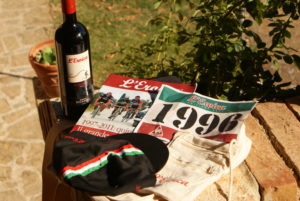
I was immediately comfortable on the bike, save for familiarizing myself with the down tube shifters and working at keeping my feet in the toe clips. The simplicity of the bike- the ease of using the friction shifters, the rounded bars and simple brake hoods- were immediately noticeable as significant differences in the feel, comfort and performance of the bike. The artistically crafted and long-raked fork tracked effortlessly as I descended and the bike transitioned so elegantly from downhill speed to uphill push as I worked my way south around the city of Siena. I began to roll a slideshow of images in my head of the stars of the 70’s, pounding over the cobbles of Flanders and the pavé of Roubaix, climbing and descending the hills of Liège-Bastogne-Liege and the Tour of Lombardy, and pounding out a sprint in Sanremo and Tours. The simplicity and elegance was all so apparent as to what it left for the man to accomplish, the machine merely the means to which the strongest always reached the finish line first. It seemed to me to define a simpler time in the sport, in the world, in our culture before the advancement and rapid alterations of lifestyle caused by technology, modernization, exotic frame materials and globalization. The array of colors from the jerseys of my fellow participants told not only the history of such classic frames built by Legnano, Olmo and Atala, the teams of Del Tongo, Brooklyn, Kas, Molteni, and the local clubs of Riello, Berlinetta and Piovesana, it also presented another common thread that helped to knit us all together as we littered the countryside, a discovery that involuntarily took me even deeper into what is equally important in Tuscan history and culture as cycling- food and wine.
The first section of strade bianche, Madonna di Brolio, elegantly lit with candles in the early morning sunrise. Brolio is synonymous with Barone Ricasoli, the oldest winery in Italy and the inventor of what is Chianti wine. Since 1141, Castello di Brolio has been producing wine, and in 1872 Bettino Ricasoli documented what he believed was the perfect wine to take advantage of the land and soil of this particular region of Tuscany. As the early morning chill disappeared, so did my initial apprehension regarding the Moser as I completed the sector at Brolio. Tuscan food and wine is perhaps the most ubiquitous of all culinary and oenological endeavors in the U.S. Highly praised but much maligned and misrepresented- think Trader Joe’s meets the Olive Garden- discovering the secrets of Italian life and culture is as much about riding through it as it is stopping to taste it, and being open minded to the contrasting elements that fill the roads of l’Eroica. The first ristoro, or rest stop, came after 48 kilometers in the middle of the fourth section of strade bianche. The previous three were at lengths of 3,100, 3,200 and 700 meters. The fourth section totaled fourteen kilometers. Depending on how you view it, the rest stop was either the furthest thing from traditional, or the definition of traditional. It was complete with every type of food that defines the rusticity of Tuscan food- salami and prosciutto sandwiches, traditional salt less bread with jam, sweet cakes and nougat cakes- paneforte– and wine. The art of modern Tuscan food was founded on the soul of the simplicity of what was offered here and given my choice, I think the modern energy bar can remain at home if I can choose to fuel myself on tradition rather than innovation.
After initially feeling the allure of the gravel tracks, and wrestling with my impatience at the lengthy distance between the first and second sections, my comfort and speed on such a vintage and classically designed bike began to fade. The challenges of the day began soaking my armor like boiling water, soon after finishing the fourth section of gravel and entering the fifth, which was 10.2 kilometers. Burning fatigue in my shoulders and the red hot pain in my palms slowly eroded my will, the struggle documented in the slow ticking of kilometers as I rocked back and forth on the bike, the heavy gearing on the steep and undulating gravel becoming a major hindrance. The elegance and simplicity was replaced by brute force, a rusted will and ugly form that heaved and weaved across the bike, painfully searching for the modern comfort that is taken for granted when I swing my leg over my bike for my daily ride. Pain in the legs and lungs is a given in cycling and accepted as a passage to improved physical strength and an iron will- elsewhere it simply becomes a nuisance. I was struggling with my search for authenticity. The seventh sector, at 11.2 kilometers, pushed me to the brink of exhaustion, and proved to be my breakthrough point in my quest for the genuine.
Over the past nine years, I’ve ridden countless sectors of cobbles, from the courses of the Tour of Flanders and Paris-Roubaix to Gent-Wevelgem, Het Volk and Dwars door Vlaanderen. The challenge it always seems is managing the discomfort and fatigue produced by the cobbles, foul weather, or a dreaded combination of each. The bike has never been an issue, per se, merely my fitness on it, or lack thereof on some occasions. And while the stones of northern France and the Flemish Ardennes present a severe difficulty, it is with the most gruesome imagination that around the middle of the seventh sector of strade bianche I began contemplating the challenge of riding both Flanders and Roubaix on a vintage bike. If I was to recreate the traditions of cycling on this course, why not continue the experience on the greatest roads of the spring classics? My mind began to then fade into an argument with the UCI, as I imagined Moser, full horsepower, attacking the Roubaix pavé, leaving a trail of fatigued and empty men in his dusty wake, his rainbow jersey valiantly on display behind the dirt and grime. When he conquered the world hour record in 1984 in Mexico City, Moser covered 50.80 kilometers on what was then considered advanced technology for bikes. Those riders that followed and subsequently set new records- most notably Miguel Indurain, Tony Rominger, Graeme Obree and Chris Boardman- all did so on the latest innovative equipment and laboratory tested technology, culminating in a record of 56.375 kilometers in 1996 by Boardman on a carbon fiber monocoque aerodynamic frame with a 5-spoke front wheel and a rear disk wheel. The UCI determined that the advancement of modern technology was a hindrance to the classic nature of the hour record, and all ensuing attempts would have to be ridden on a standard track bike that met frame standards from 1972, the year Eddy Merckx rode 49.431 kilometers on a classic steel tube bike with standard 32-hole rims. Boardman’s last race in October of 2000 covered ten more meters than Merckx did in 1972. In riding the strade bianche on my carbon fiber bike, I can honestly say from experience it is not overly difficult and that it actually can be enjoyable. Often times on the pavé, I can not say this. The allure and the beauty behind l’Eroica is the struggle that comes with the unfamiliar- that being not so much the gravel roads as the bike selected to cover them. As great as the professional road race Monte Paschi Strade Bianche is, first run in 2007, I think the UCI has it backwards. The hour record is a perfect stage for exploiting advancements in modern technology. Imagine the sponsors that would support the event, the bike companies that would invest in material and design testing, and the real time results of this technology in the form of the perfect marriage between man and machine. On the other hand, I’m now of the belief that the riders who compete in the Monte Paschi Strade Bianche do it on classic steel tube bikes with down tube shifters and 6 speed clusters. Why? Because this is the essence behind the event and this is what provides the defining element that separates man from bike and pits him against himself, the terrain, his own strength and his competitors. The bike is simply the means of transportation that gets him from the start to finish. Flanders, Roubaix and the others have all changed and adapted and the bike and the race course have grown together. L’Eroica is the opposite. It remains linked with the past, that one day a year when time stands still. After 5 hours, 32 minutes and 14 seconds and 132 kilometers on my 1978 Moser, I completed l’Eroica. I was elated, exhausted and relieved. The final delirious kilometers of pain and discomfort were masked by thoughts of celebration and indulgence in the simple pleasure of eating and drinking in Chianti.
The village of Castellina sits high on a ridge overlooking the vineyards that drape the valley that drops down to Poggibonsi. The 20 kilometer climb from Poggibonsi to Castellina on the SS 429 is one of the most scenic roads in the Siena province. Strolling through the narrow streets of the historic center, one is forgiven if they feel like they’ve stepped onto a Hollywood stage set. Tiny shops decorate the streetscape, and windows are filled with handmade articles ranging from silk to ceramics, art galleries and home furnishings. A town in Chianti would lack authenticity without a few wine shops, and easing into Enoteca Le Volte, I am delighted to see a variety of olive oils for tasting, floor to ceiling racks neatly displaying hundreds of bottles of wine, and a gelato stand in the back. I gape at the selection of wines, and pull a bottle of 2007 La Massa Giorgio Primo from the shelf. Near the village of Panzano, Fattoria La Massa is the wine making grounds for Sicilian native Giampaolo Motta. Glimpsing the vineyards from the road below on the return to Gaiole, caused me to think-partially to block out the pain and partially to answer the question in my own head- is how does a Sicilian make wine in such a traditional region that has been dominated by the likes of Barone Ricasoli, for example, who sponsors the Eroica. The answer, as Motta states, is not to turn your back on tradition, like some have criticized him. His signature wine, Giorgio Primo, has been criticized as the complete antithesis from traditional Chianti, the oenological backbone of Tuscany. However, if one understands the history of Tuscany, Giorgio Primo never really leaves the tradition of Tuscany. Since early 1600, vine growing in Tuscany was revolutionized by grape varieties such as Cabernet Sauvignon and Merlot. The leading person in this revolution was Cosimo di Medici III who was passionate about wine. If the history of La Massa goes back to 1490, it is the history of generations of people who worked the unique soils in Panzano on the very same varieties found nearly 400 years ago. Giampaolo, like so many others, perpetuates history with a touch of classicism and an eye to the future.
I explain to Aleandro, the owner of Enoteca Le Volte, that I drank a bottle of Giorgio Primo with dinner the night before celebrating l’Eroica. The expression on his face told the story of a man who was suddenly transported back to his childhood, poring over the pages of the La Gazzetta dello Sport following his hero, Felice Gimondi. I told him I rode a Moser, and he erupted with delight, explaining how important Moser was as a champion, a figure that appealed to all of Italy in their continued efforts to bridge the gap between their dark past and the post war expansion era. “I have” he said in Italian, rubbing his arms “goose bumps.” Sharing in his delight, I explained my celebratory dinner at La Leggenda dei Frati. The restaurant sits in the lower valley, up the SS2 from Poggibonsi. The interior is completely white, the antithesis of the stone structure that houses it, and a departure from the more traditional trattorias and restaurants that fill the village a few kilometers away. An innovative gourmet menu representing a contemporary spin on classic Tuscan fare balances time-honored Tuscan traditions with modern techniques, offering straightforward, un-manipulated fare. Aleandro pulled a thick hard cover book from his shelf, and began thumbing through the pages, until a large color photo appeared of the Saporito brothers, Nicola and Filippo, the manager and Chef of the restaurant. “We are no one without our traditions, and it is important the younger generations, like Giampaolo and Filippo recognize this history. L’Eroica is very beautiful, it reminds us every year of Binda, Girardegna, Magni, Coppi, Bartali, Gimondi and Moser. If we want to go into the future, we cannot forget our past.” Aleandro continued his journey through the traditions of Tuscany. Again, I found myself in a position to say could I stay here all day? The answer was, of course, an emphatic yes. He was, without knowing, providing a stamp of authenticity on my experience, much like the stamps I received at each of the ristori on my official card from the day before. Laying claim to being an expert on anything is easy, and without experience there is no basis for comparison. Being authenticated as a congnoscenti is a rite of passage across gravel roads, through the enduring of mental and physical pain, and remaining in touch with history.

As I walked along the Via dei Fossi in the Santa Maria Novella district in Florence on my last day in Tuscany, I glimpsed a wool cycling jersey in the window of a vintage clothing store, Epoca. The jersey was a 1974 Bianchi-Campagnolo World Championship original, I was told by the shop’s owner, Valentina, and was worn by Gimondi. In explaining I rode the Eroica, Valentina told me the jersey belonged to her brother, who had also been in Gaiole selling some of his vintage collection. Neatly stacked and folded on a shelf in a small back room were dozens of classic sweaters, including a Sanson jersey worn by Moser. I was dumbfounded that such important originals were on display in such an obscure, non cycling specific location, but Valentina dismissed this with a shrug of her shoulders as I gazed at the jersey, hanging alongside the front page of a newspaper autographed by Gimondi. The handwritten note pinned to the jersey read “non e vendita.” Tuscany provides such a dramatic, evolving backdrop for the lifestyle that is open to anyone who wants a taste. It’s charm comes from the people like Fabio who sells bikes, Aleandro who sells wine and gelato, the characters that fill the bars and banter while sipping prosecco or an espresso, it’s in the stucco and stone buildings and villas, all draped across its undeniably beautiful landscape that makes the experience so surreal. But what makes each shop- much like what makes everything in Italy come to life- is the personality behind it, and the impassioned life that fills the space and orchestrates the chatter with everyone that walks in. Moving through this on a bicycle is often times like traveling through a painting; the imagination brings to life the imagery, until one can retreat in solitude to reflect on its impact over a simple meal, a glass of wine or a bike ride.
I recalled the dinner I ate the night after completing l’Eroica- the creative energy of Filippo Saporito satiated every bit of my fatigued body and electrified my imagination as I enjoyed the wine artfully crafted by Giampaolo Motta. As I stared at the wool jersey in Valentina’s shop, I imagined sitting down for a classic Tuscan meal like the one I ate at the ristoro, the jersey draped over my shoulders, sipping a glass of Barone Ricasoli Chianti Classico, my trophy for completing l’Eroica. I am often reminded that it is not as much about the accomplishment as it is the experience. I think my bottle of Ricasoli will be on the shelf a lot longer than my Giorgio Primo. Experience needs to count for something, and more often than not, it is everything.
